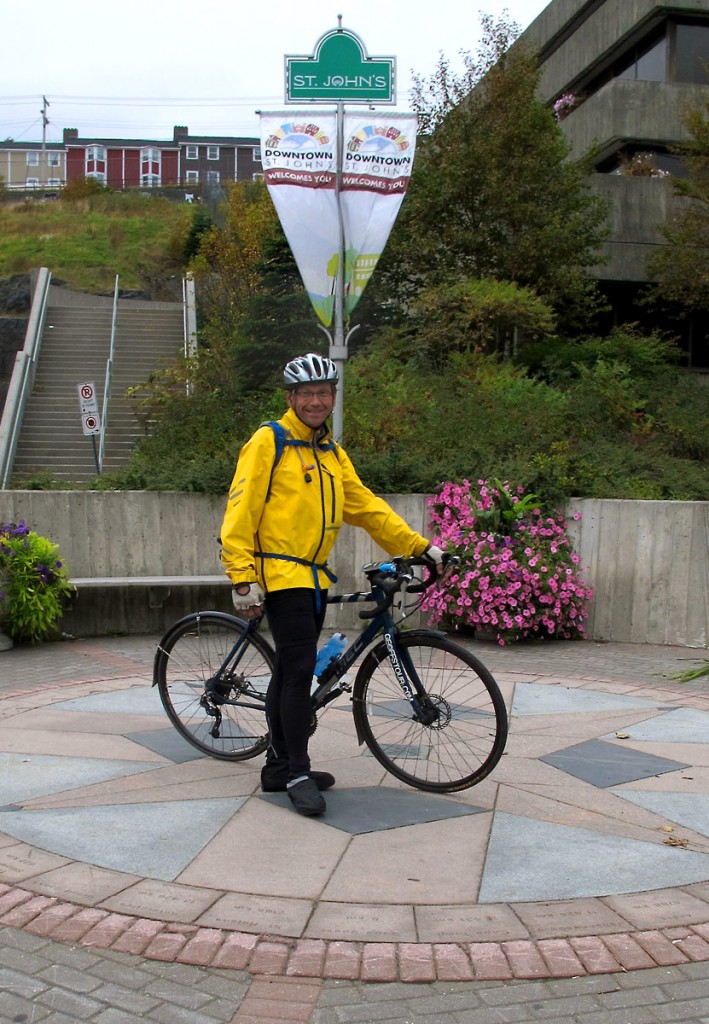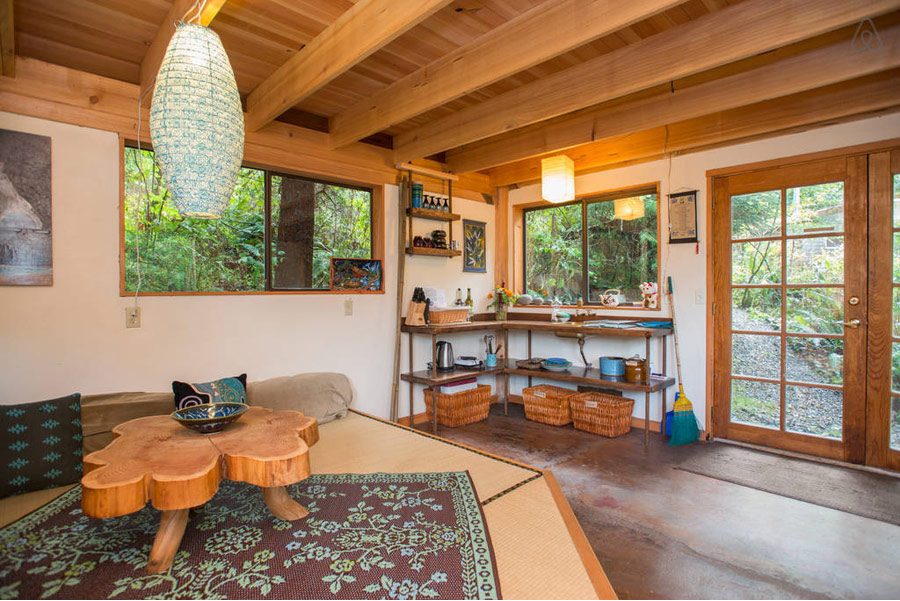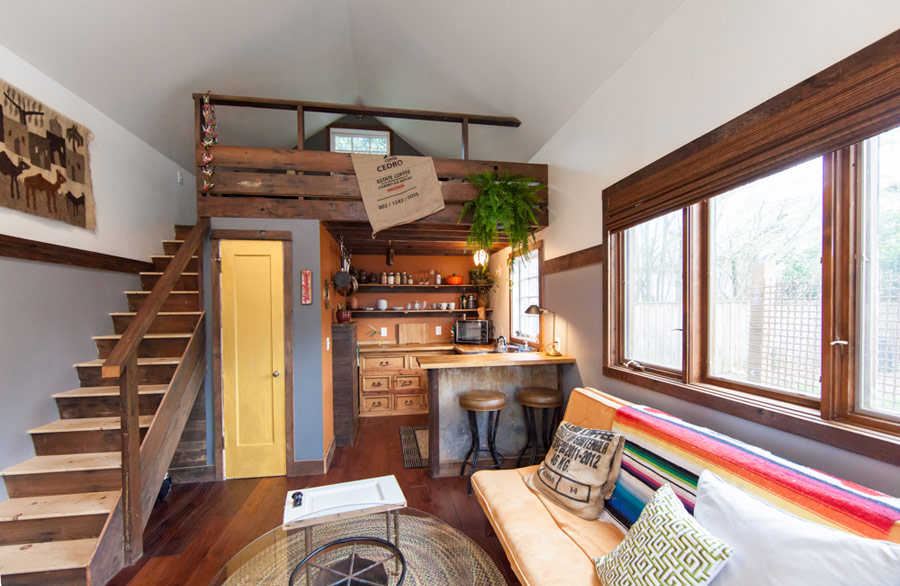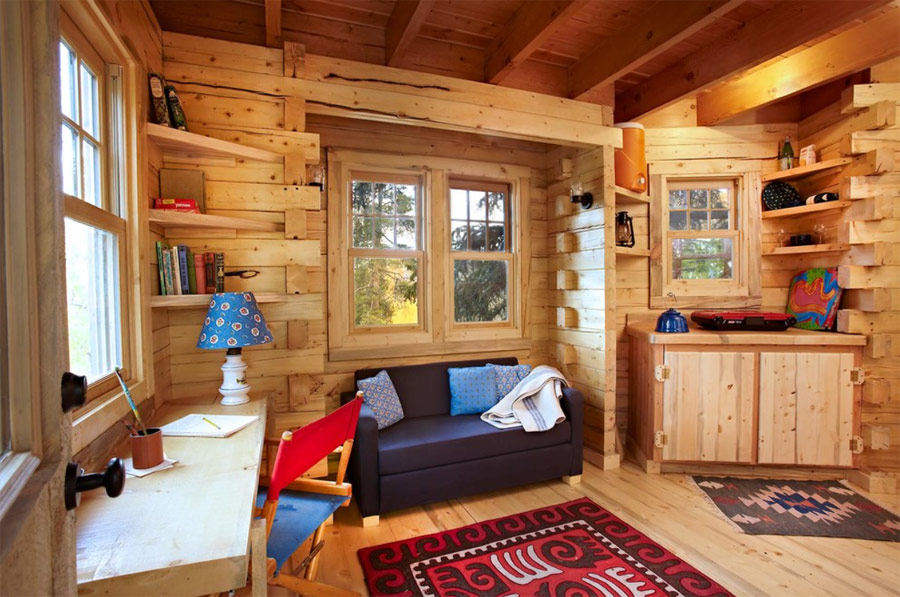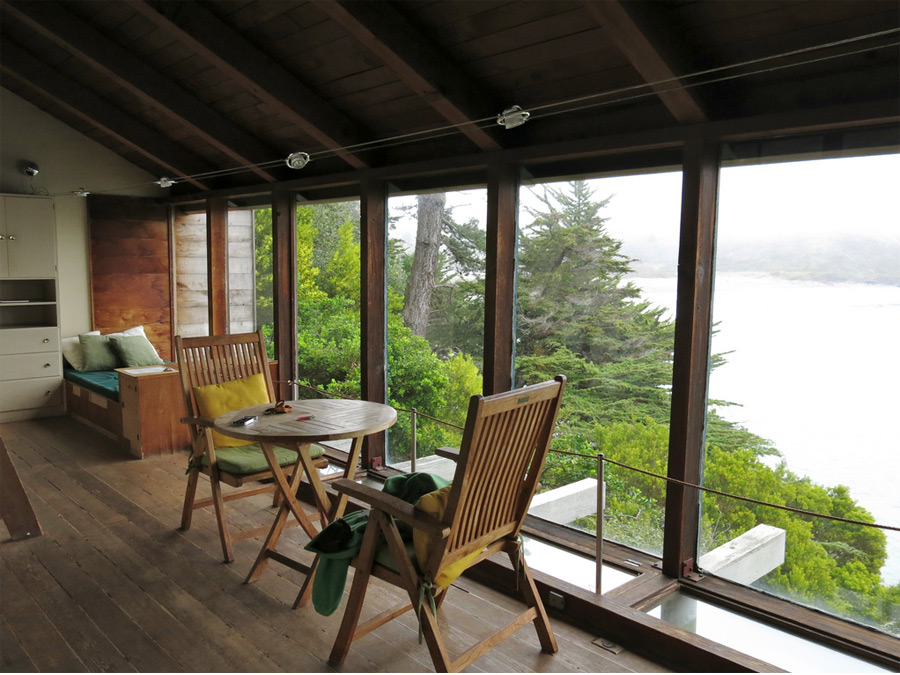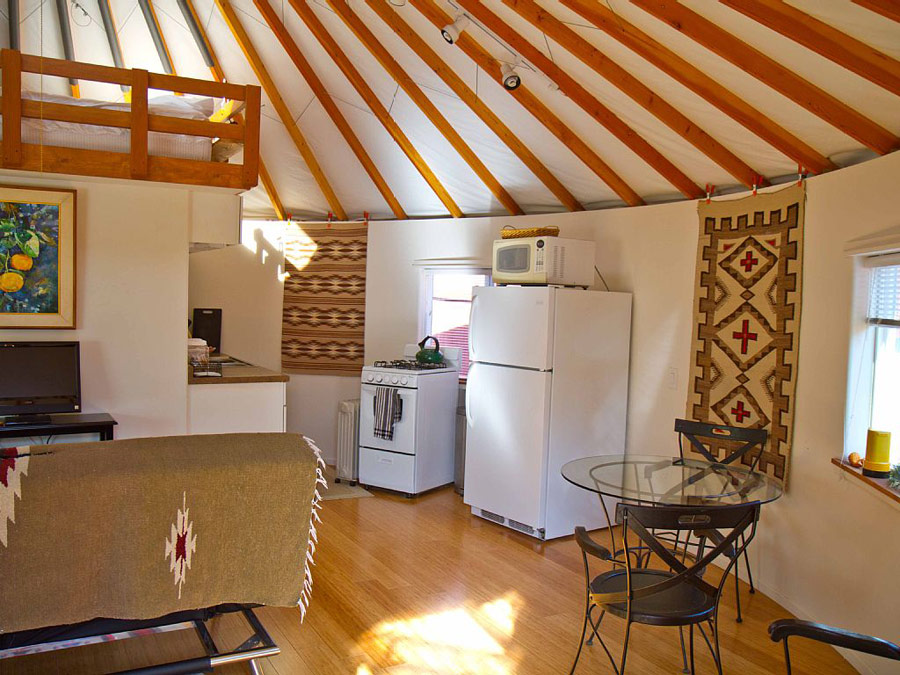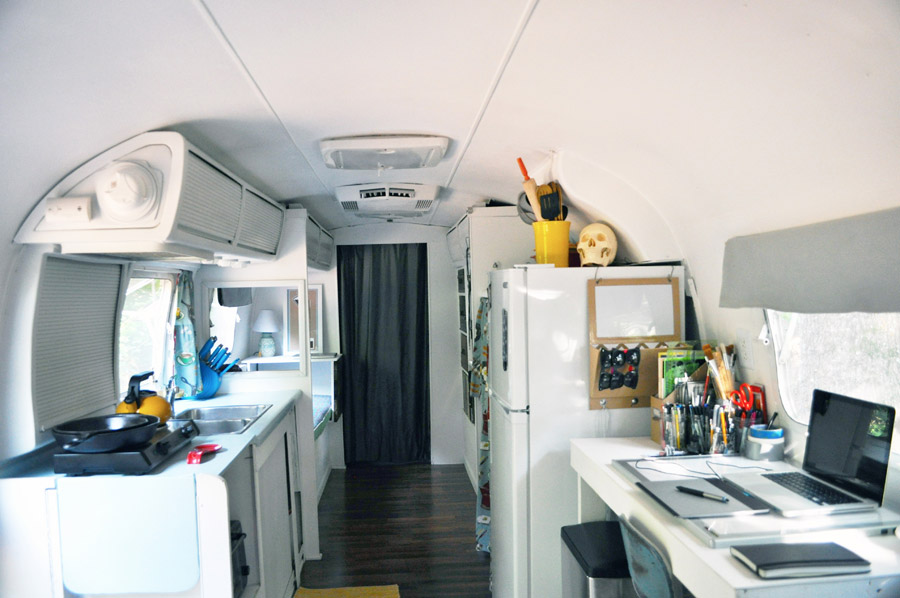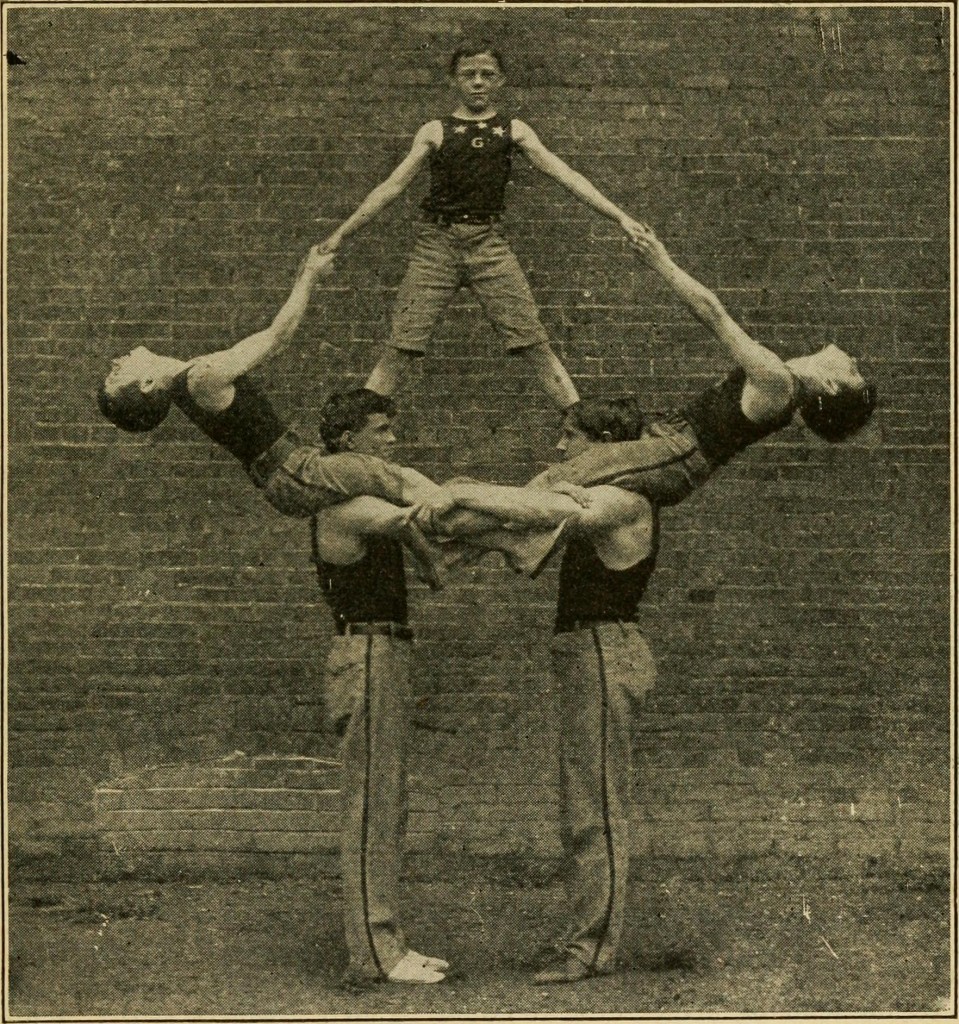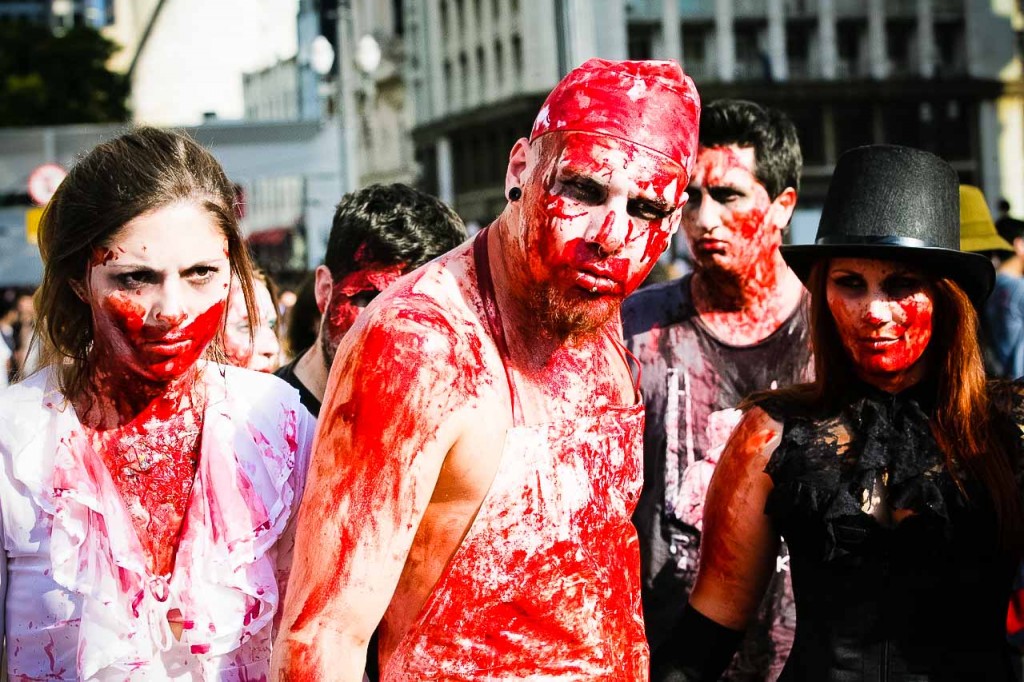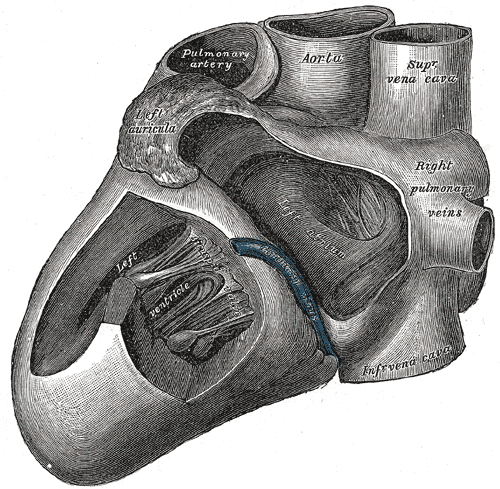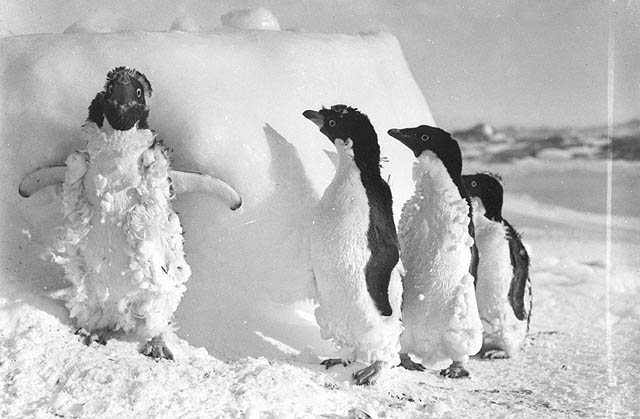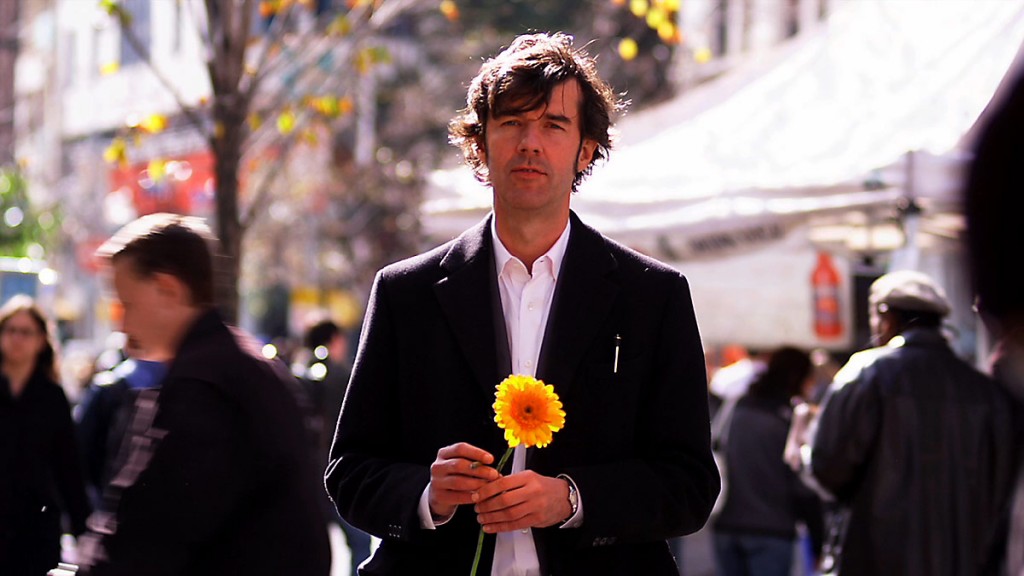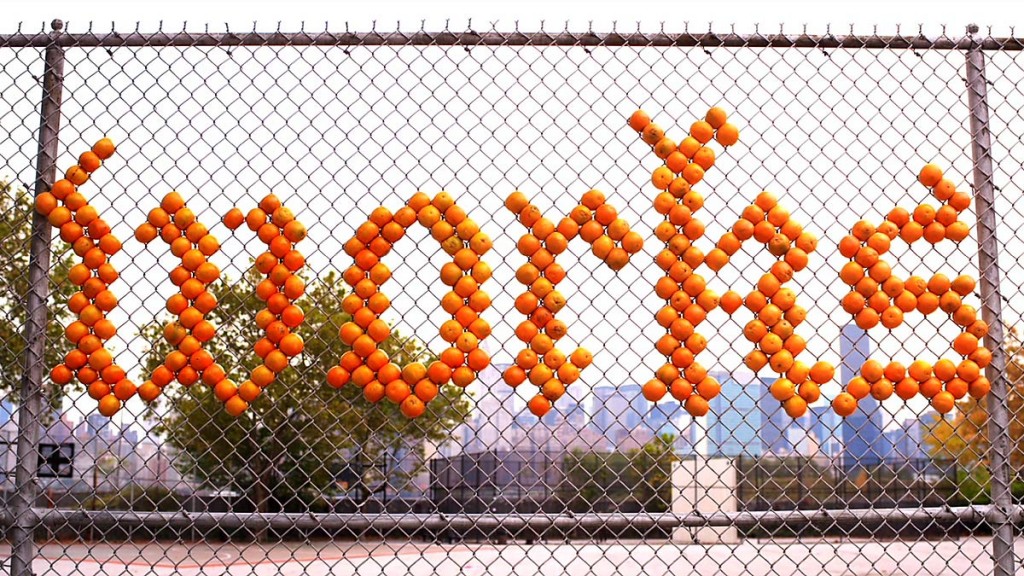While you were sitting on the couch, watching True Blood, Geoff was busting his ass. Cycling across the country—from Vancouver, BC, to St. John’s, Newfoundland—he covered a total of 8,400 kilometers, over 81 days. He also took a few (85) stops, all while celebrating his 50th year on the planet.
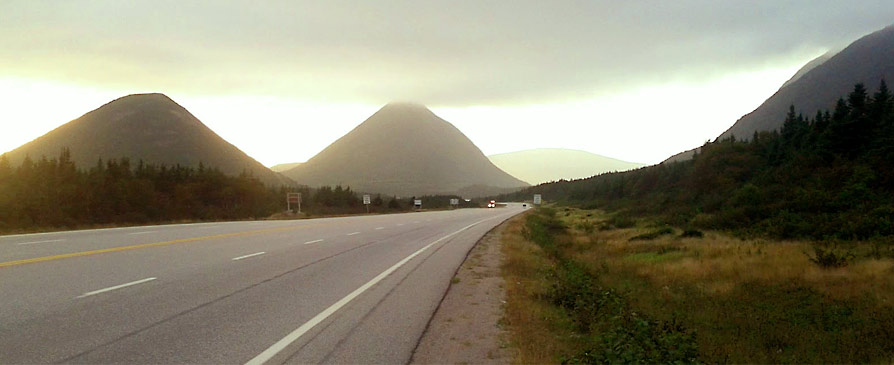
Eric: So, you’re on the road right now. Tell me where you are, and what you’re doing.
Geoff: We have been slowly making our way back to Vancouver. We are currently in Niagara Falls. VanGo, our 1984 VW camper van, decided to entertain Canada Customs with a steam and antifreeze show as we crossed the border. So we are “camping” in the Canadian Tire parking lot hoping that they can fix a blown radiator hose tomorrow, a Sunday. I think that this is VanGo’s sixth visit to the mechanics along the route.
Eric: That sounds unpleasant. Ever thought about upgrading your ride?
Geoff: We bought VanGo shortly before starting this trip. The form factor worked well for us but it turned out that this one was not so good. We have stayed in a lot of campgrounds over the summer and have looked at and discussed the pros and cons of various vehicles that we have seen. Aside from a more reliable RV, we think that a slightly larger one would have worked better. Our current thinking is that something based on the Daimler-Chrysler Sprinter would be a better fit for us for long-term touring.
Eric: This comes after a trip you took on your bike. Can you tell me a little about your journey?
Geoff: Starting on May 20, I rode for 81 days, 16 weeks of elapsed time, and a total of 8400 km from Vancouver, BC to St. John’s, NL. My wife Rochelle drove VanGo as a support vehicle. The route took as many back roads as possible and often zigzagged as we tried to visit as many friends and relatives as possible along the way.
Eric: What compels someone to do such a thing?
Geoff: It was really a number of things that came together at the right time. The initial spark came from Rochelle who wanted to do something special for me for my 50th birthday although she had some other ideas, including driving Formula 1 cars in England. I have often admired stories of others that have done cross Canada bicycle trips but never thought of it as something that I could do. Last fall, I came across a blog post by Brek Boughton, who was attempting to ride to the Arctic Ocean and back from Vancouver in the winter! While that just seemed suicidal to me, he had mentioned riding across Canada a couple of years ago. This fit perfectly into the hole of “what to do for my 50th”. It also reminded me of my cousin, Tim, who did the ride 5 years ago before succumbing to cancer. I just had to do it.
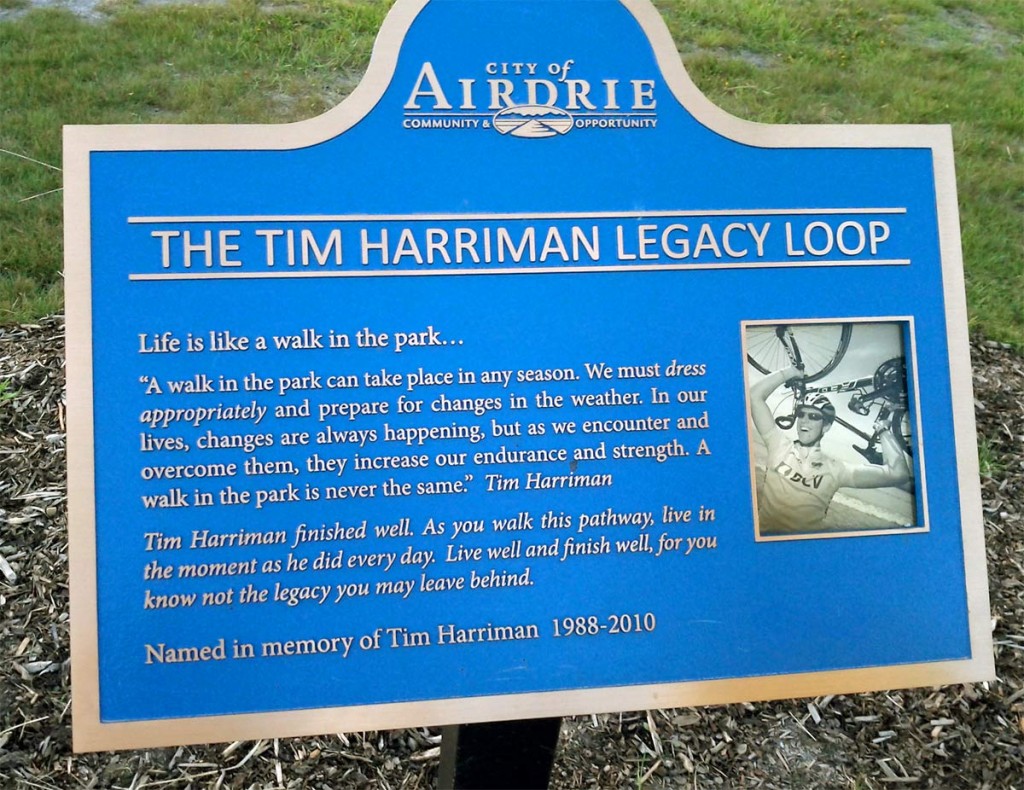
Eric: Tell me about Tim.
Geoff: Tim was actually the son of my cousin and was diagnosed with leukemia at age 14. At 17, the leukemia was gone and he did a cross Canada tour in support of childhood cancer call the Spokeman Tour and it was very successful. He was seen as a real hero in Airdrie, AB where he grew up. Not long after the tour was over, the cancer came back and he eventually succumbed to it 3 years ago.
Eric: A friend recently took a long bike trip. He thought it would give him time to think about his life. Instead, he spent the whole time thinking about his cadence and the next hill. Was this the same for you?
Geoff: Not really. I wasn’t expecting to think about anything in particular. I’ve always found cycling to help me think though things that are on my mind. As a software developer, a couple of hours of cycling have often helped me to resolve technical or design issues that I had been working on. I did some of that on this trip. I would work though some designs while on the bike and then work on implementing them afterwards.
I have also gotten into listening to technology-related podcasts while riding (using a single headphone for safety) in low traffic areas. This allows me to keep up with technology and get some exercise at the same time. I listened to a lot of podcasts on the trip.

Eric: I’d imagine that Rochelle had a lot to do with this trip being a success. Can you tell me a little about your relationship, and how she contributed to the journey?
Geoff: Rochelle was a huge part of the success of this trip. The trip was originally planned as a self-supported trip. That would have been a lot tougher. Not only would I have had to carry everything that I needed, Rochelle and I would have been apart for long periods of time. That is not something that either of us wanted. As it turned out, her summer freed up and we changed the plans to have her drive a support vehicle. She did just about everything other than pedal the bicycle. She managed our overstuffed van, keeping it stocked with food, cooking great meals, making sure she caught up with me a couple of times a day to make sure I was well hydrated and feed. When I would arrive at the campground in the evening, she would be there to welcome me with the van all set up for the evening and a hearty meal.
She was also great at encouraging me when times where hard. We work really well together and I think that we do a good job of supporting each other when we need it. This summer, I needed a lot of that kind of support.
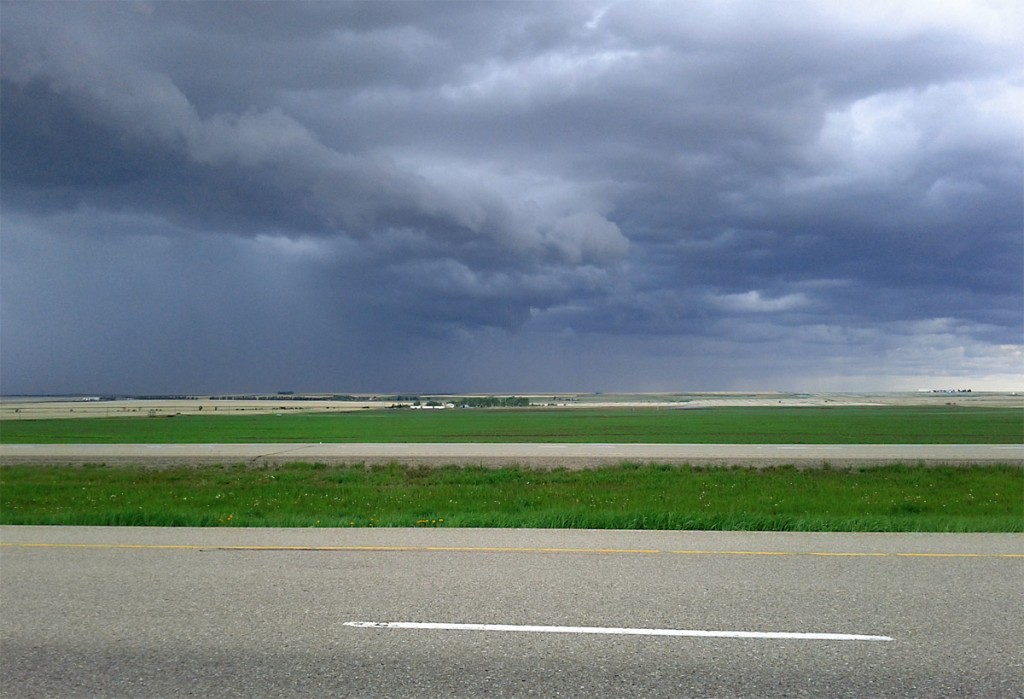
Eric: What were the hardest things about the trip?
Geoff: Wind was by far the hardest thing. Riding east was supposed to provide me with more tail winds than head winds but that didn’t seem to be the case. I would guess that I had 3 days of big head winds for every day of big tail winds. The winds across the prairies were the worst. The days where I fought head winds all day were not fun.
There were also a lot of highways that were not great. A few times, I ended up on roads that had heavy traffic and little or no paved shoulders. When I could, I would get off of those roads and find some alternate route but sometimes that was not possible. Riding for hours on a road with cars flying by you at high speeds within inches was nerve-racking.
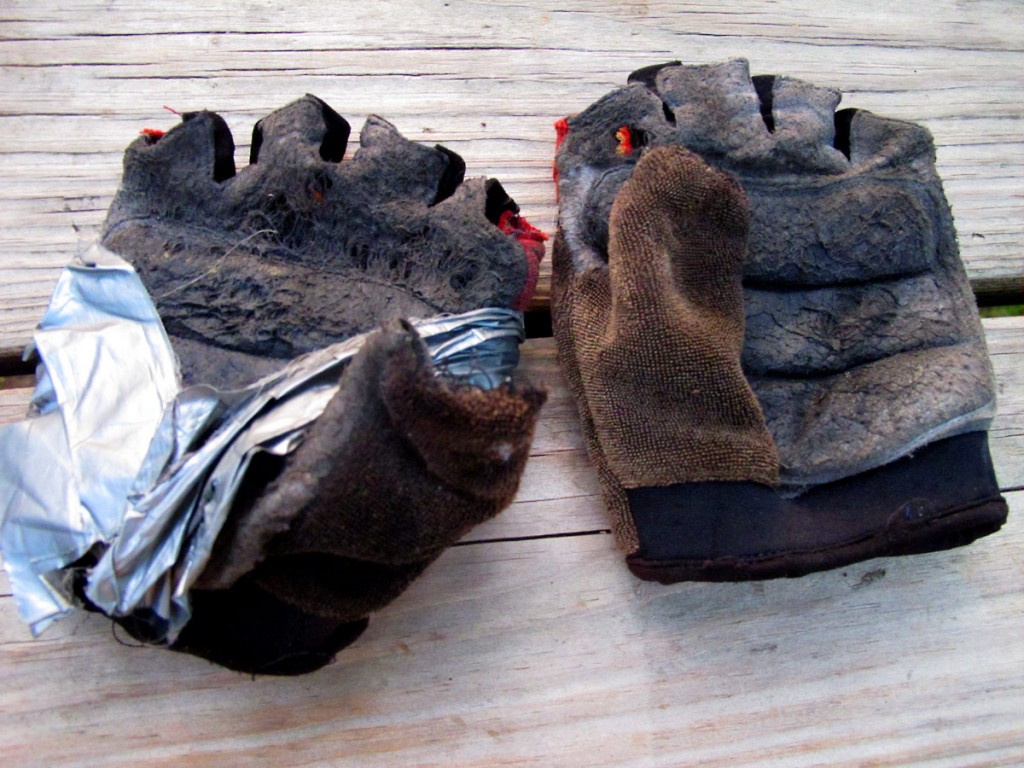
Eric: Got any blisters you want to tell us about?
Geoff: Surprisingly, few blisters. I started the ride with a well broken-in pair of cycling shoes and my brother-in-law bought me another pair in Detroit as we passed by his place. Both pairs of shoes worked well. The most problematic part of my body was my hands. I did get a few blisters on my palms and built up some pretty good calluses. I completely destroyed two pairs of cycling gloves along the way. I think that I probably lean too much on my handlebars.
Eric: Did you ever just want to pack it in?
Geoff: The only thing that had me thinking about packing it in was VanGo. The constant worry about a breakdown and the disruption of the breakdowns we did have was more troublesome than anything else on the ride. Spending 5 days in Grand Forks, ND, 5 days in Fredericton, NB, and another 7 days in Vermont waiting for repairs were not great for the spirit.
The actual riding went along pretty smoothly. I only had 6 flats the whole trip and had to replace the rear wheel after hitting a bad series of potholes. Even the 5 straight days of 40+ °C weather went remarkably well.
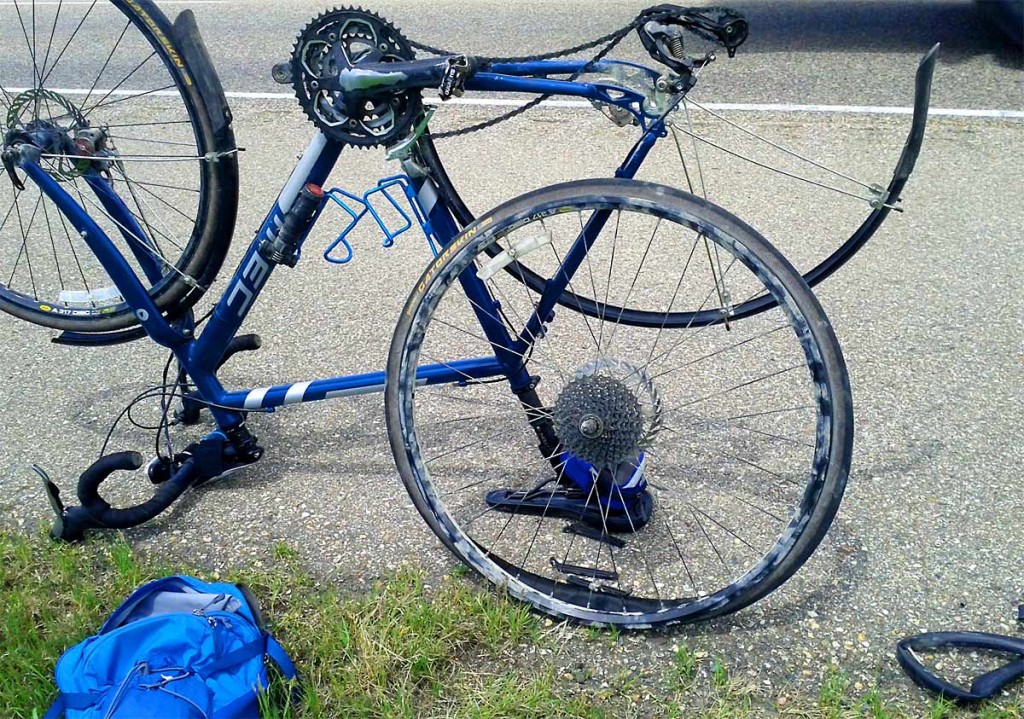
Eric: Conversely, what were the best things?
Geoff: Spending the summer on an adventure with Rochelle was the best thing! Setting an outlandish goal and accomplishing it was amazing. I also had 81 days of riding into what was almost completely unknown territory for me. There was always something new to see around the corner. Nothing was ever repeated.
Eric: Did you learn anything about Canada that you didn’t know before?
Geoff: Lots of little things but nothing that really stands out. About a third of my trip was in the US and there were some pretty eye-opening things there. The incredible poverty and abandoned neighbourhoods were very disturbing.
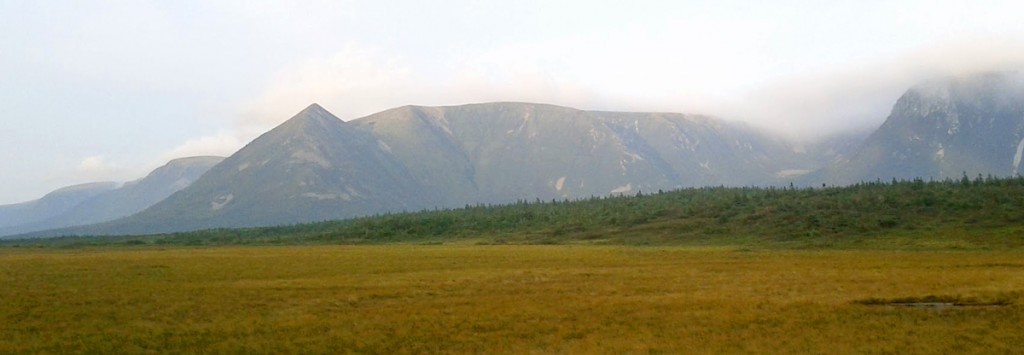
Eric: If you were to return to one part of the country, to spend a summer, what would it be?
Geoff: The Maritimes and Newfoundland. It was my first experience in that part of the country and I felt that I only just scratched the surface. The coastline and various little villages were amazing.
Actually, one of the problems with doing such a long trip was that there was very little time for side trips, or to stop and look at anything in more detail. We tried to be nimble and changed our route several times to get more out of the trip but there were still so many things that we just passed by in order to cover enough distance each day.
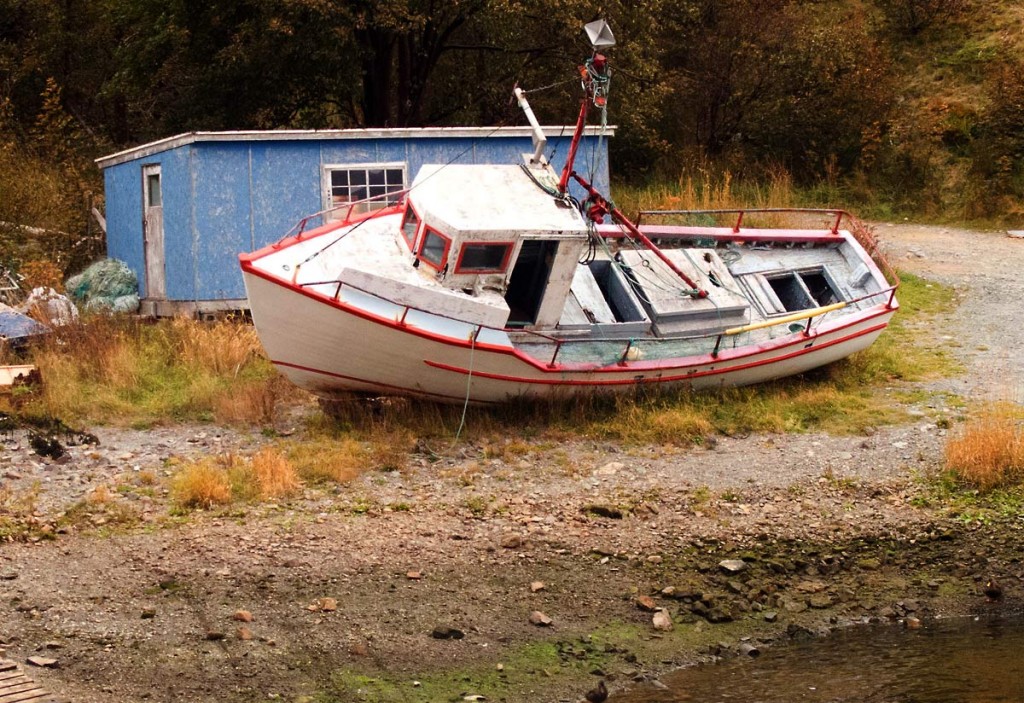
Eric: If one of the readers were to be interested in taking a trip like yours, how would you suggest they prepare?
Geoff: A lot of people have done similar trips so there are many blogs on the Internet describing each of these journeys. There are lots of good tips in those. I found Quidi Vidi, the place that I “dipped my wheel in the Atlantic” that way.
Some training is required but you can ramp up to a reasonable pace while on the trip itself. I have been a regular recreational cyclist for most of my life but I really only started to train for the trip about 4 months ahead of the trip. By the end of that training, I was only doing about 1/2 of the 600 km weekly distance that I hoped to cover on the trip itself. For the first week, I was a little behind the pace I had planned but the rest of the trip was better than my plans.
Eric: What does one absolutely need to own for this kind of a bike journey?
Geoff: Obviously a bicycle. It doesn’t have to be particularly special, just something that you are comfortable with and of good enough quality that it will hold up reasonably well given the distance. I used a MEC cyclocross bicycle that I had been riding for a year. Most would go for a touring bike but I just rode the bike I had.
A variety of cycling clothing. There were a lot of cold and wet days at the beginning and end of the trip. Leg and arm warmers and layers that allow for quick adjustments were really helpful. I used a backpack with a 3L water bladder in it. That provided me with most of the water I would need for a day, if it wasn’t too warm. With the bladder full of ice, it made 40°C days bearable. I also used 3 rear flashing red lights and 2 flashing front lights. I wanted to be as visible on the road as possible. I also had mostly bright cycling clothing for that same reason.

A smart phone mounted on the handle bar was really valuable. Rochelle and I used Google Latitude to keep track of each other and we used Latitude to put a real-time map of where I was on the website. The Google maps were great for finding a good route each day, I did frequent posts on Facebook. I also had my podcasts on the smart phone. Dealing with cellular coverage issues in two different countries was a challenge. We ended up with 4 smart phones, 3 MiFis and a variety of accounts with a lot of different carriers to be able to keep contact with each other and to continue to run our business as if we were not travelling. Still, we found many areas where there was no cellphone coverage, let alone cellular Internet.
Eric: So, what’s next? Any big trips/adventures in the works?
Geoff: I had to think about this one for a bit. The short answer is “no” but there are lots of ideas brewing. There are no plans for another bicycle trip across another continent although I wouldn’t completely rule that out. Maybe in a couple of years I will have that urge again. I would very much like to do some more focused rides such as the Kettle Valley Railway or riding though the Alps and Pyrenees in Europe. I have found that riding through mountains, both on and off road, is one of my favorite things to do. I am also looking at joining the BC Randonneurs and doing some of the extremely long rides that they do.
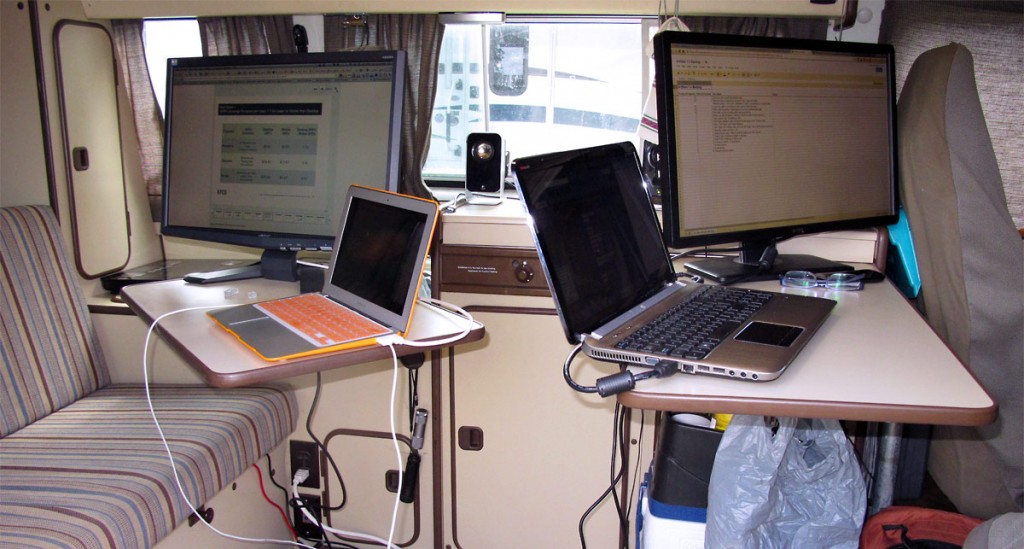
It is interesting that our 4 months in a little camper van was something that both Rochelle and I enjoyed. A VW Westfalia is really too small for an extended trip like this, at least for us, but it did give us a sense of what a modern nomadic lifestyle would be like and we really liked it. Now that we are home in our 1,200 sq ft apartment, it seems so big and unnecessary. We are now contemplating downsizing and going permanently mobile. We could travel throughout Canada and the US using the weather and interests to guide us. I could do some cycling much like this summer’s trip but there would be no hurry and no real goals. We could stop and hang out at interesting places for an extra day or an extra month. On our trip, we met a Swiss couple—Kathrin and Peter—who had put their vehicle in a container, sent it to Halifax and were on a year-long North and South America adventure. I could see us putting our vehicle in a container and following it to other parts of the world. It will take a lot of reconfiguring of our lives to get ready for this, but we are working our way towards that goal. This summer’s trip was a huge first step in that direction.
Eric: Thanks for sharing your trip with all of us, Geoff!
Geoff: Thanks for the opportunity to share my story! I hope that it inspires others to do something special. The important lesson from my trip is that a 50 year old, with no special abilities in cycling, could tackle and complete such an outrageous goal.
